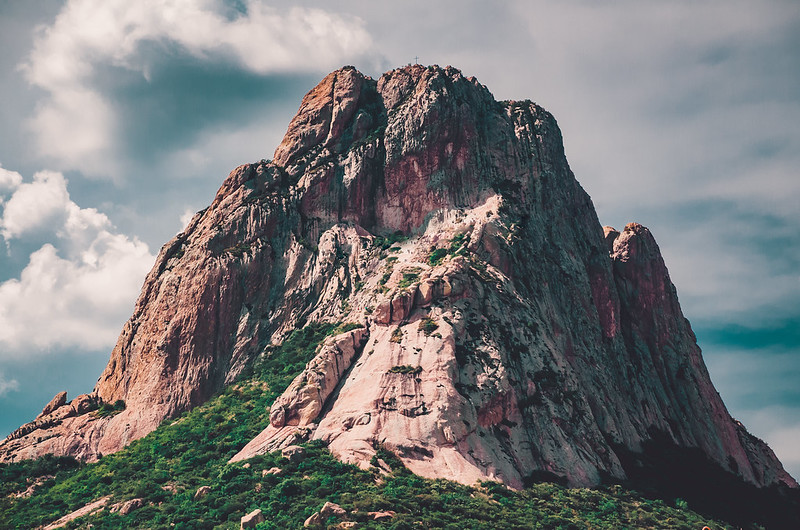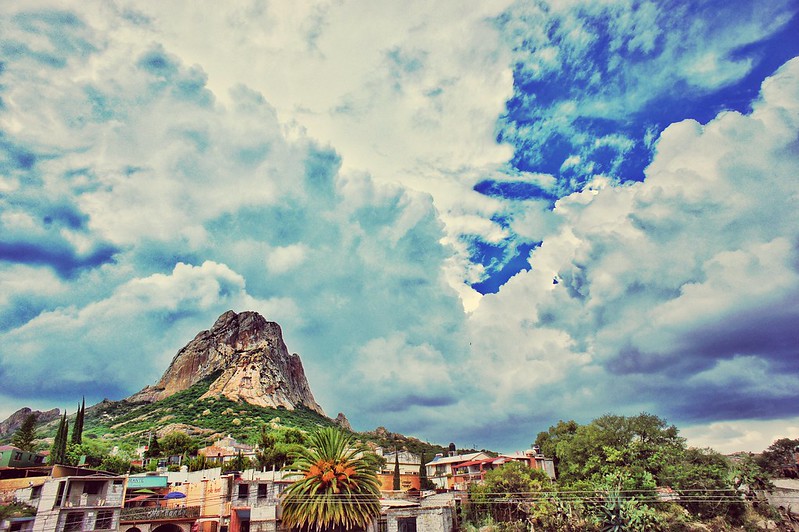Peña de Bernal is a massive 433-meter monolith located in San Sebastián Bernal, a small town in the Mexican state of Querétaro. It was previously believed that the porphyrytic monolith originated in the Jurassic era. The third-largest monolith rock in the world after Uluru (Ayers Rock) in Australia and Sugarloaf Mountain in Brazil. Many believe the Peña de Bernal monolith has a unique spiritual energy and is ideal for reflection and meditation.
The indigenous Otomi people, believed the monolith as having great cultural value. They considered Peña de Bernal a sacred site. For ages, the Otomi have conducted rituals and ceremonies near the monolith, and their customs are still followed today.
According to geological research, the Peña de Bernal is the exposed core of an ancient volcano. The Peña de Bernal unique shape is a result of erosion caused by wind, rain, and other natural factors. The volcanic rock famed for its endurance and hardness, rhyolite, makes up the majority of the monolith.
According to a recent chemical examination, it is far younger, having most likely developed about 8.7 million years ago, according to researchers at the National Autonomous University of Mexico. Peña de Bernal is encircled by rivers, meadows and woodlands in a stunning natural setting. The region is well-liked by nature enthusiasts since it is home to several plant and animal species.
You can hike up to it, take an ATV trip, or just enjoy the downtown area. This picturesque town is surrounded by artisanal sellers selling delicious food and beverages. It is a warm and inviting place. In English, this place is known as Bernal’s Boulder or Bernal Peak. It is a popular tourist destination near the capital, Santiago de Querétaro. The surrounding natural setting of Peña de Bernal provides the best options for hiking and camping. A lot of people make the trek to the tiny church at the highest point that is reachable by foot. Even though the ascent to the summit of the monolith can be arduous, there are a variety of routes and levels of difficulty to accommodate varying levels of fitness.
Atop the monolith, visitors may take in breathtaking, all-encompassing views of the surrounding area. The best time to visit Peña de Bernal is usually thought to be during the dry season, which runs from November to April. Although the terrain is uneven, you can still enjoy the view, and if you are feeling particularly daring, do not be afraid to climb the rock for a unique perspective of Bernal.
It is a very quiet place with lovely, colorful streets. The food is excellent, and there are more traditional restaurants. An overall pleasant atmosphere is provided. The Peña de Bernal monolith is a magnificent sight, particularly from a distance. It is a representation of Mexico’s natural beauties and a force of nature that is undeniable.
Read More: Cave of Crystals: Mexico’s Natural Marvel in Chihuahua







Reference: 1






